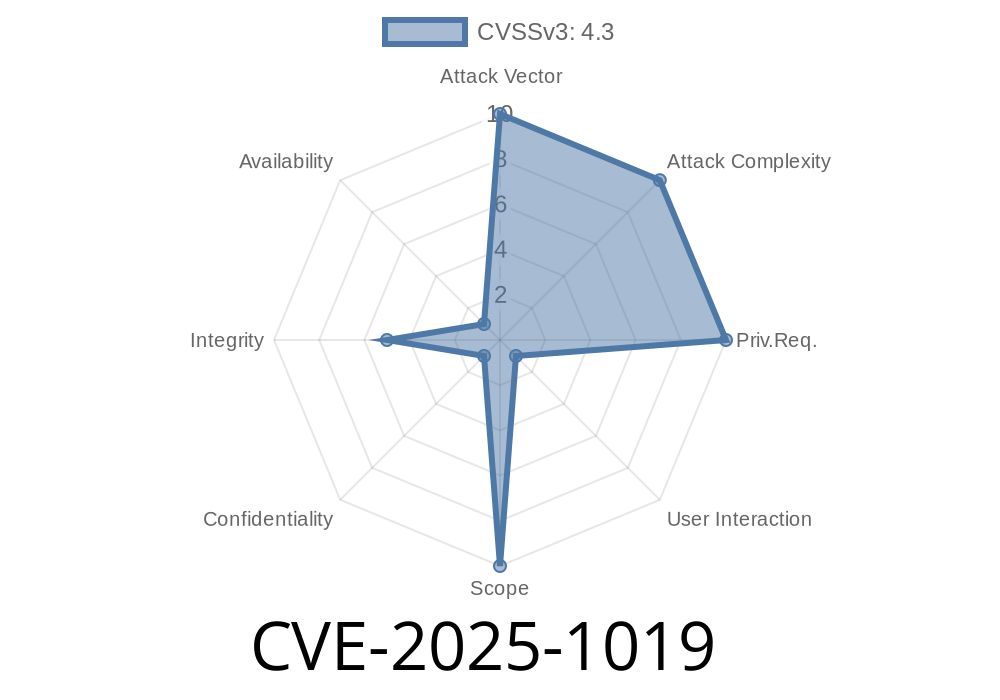Recently, a new vulnerability called CVE-2025-1019 has been discovered and registered in the Common Vulnerabilities and Exposures (CVE) database. This vulnerability relates to manipulating the z-order of browser windows to hide fullscreen notifications, which could potentially be leveraged to perform spoofing attacks. This post will discuss the details of this vulnerability, provide example code snippets, and share links to original references. Affected software versions include Firefox < 135 and Thunderbird < 135.
Background
The z-order is the order in which overlapping graphical elements, such as windows, are displayed on a computer screen. This order is important to maintain the proper layout and functionality of the user interface. By manipulating the z-order of browser windows, attackers may be able to successfully hide fullscreen notifications and perform spoofing attacks.
Exploit Details
The CVE-2025-1019 allows an attacker to manipulate the z-order of browser windows in such a way that it hides the fullscreen notification. By doing this, an attacker can cause the user to believe they are interacting with a legitimate website when, in reality, they are dealing with a fake one.
Suppose an attacker has crafted a fake website that closely resembles a popular banking website. The attacker then sets up a phishing email to direct the user to this fake website. When the user clicks on the link in the phishing email, they get directed to the fake website and prompted to enter their banking credentials. However, if the user enters the fullscreen mode, they will not see any notification that they are in fullscreen mode due to the z-order manipulation vulnerability. Thus, the user will believe they are interacting with a legitimate website and may proceed in entering sensitive information, which the attacker can then steal.
Code Snippet Demonstration
Here is an example of how the z-order manipulation can be achieved via JavaScript. This code will be hosted on the attacker's fake website.
// Trigger fullscreen mode
function triggerFullscreen() {
document.documentElement.requestFullscreen();
}
// Manipulate z-order to hide fullscreen notification
function manipulateZOrder() {
var fullscreenNotification = document.getElementById('fullscreen-notification');
var backgroundWindow = document.getElementById('background-window');
backgroundWindow.style.zIndex = 9999;
fullscreenNotification.style.zIndex = -1;
}
// Listen for the fullscreen change event
document.addEventListener('fullscreenchange', () => {
if (document.fullscreenElement) {
manipulateZOrder();
}
});
// Execute the triggerFullscreen function to enter fullscreen mode
triggerFullscreen();
In this code snippet, we firstly listen for the fullscreenchange event, which is executed when the user enters or exits fullscreen mode. In the event listener, we check if the document.fullscreenElement is set, which indicates that the user is currently in fullscreen mode. If the user is in fullscreen mode, we execute the manipulateZOrder() function to hide the fullscreen notification by setting its z-index to a lower value compared to other elements on the page.
Prevention
Updating your software is crucial in order to protect yourself from vulnerabilities like CVE-2025-1019. Make sure to upgrade your Firefox to version 135 or later and Thunderbird to version 135 or later. Always be cautious of links sent in emails or messages, and double-check the website's URL before entering any sensitive information.
Conclusion
The CVE-2025-1019 vulnerability demonstrates the importance of software security and staying up-to-date with the latest patches. Exploiting this vulnerability can lead to devastating results for unsuspecting victims. It is crucial to update your browser and email client regularly to protect yourself from these types of attacks.
As developers and users, we must prioritize security and stay vigilant to protect ourselves and our data from potential threats.
Timeline
Published on: 02/04/2025 14:15:32 UTC
Last modified on: 02/06/2025 19:40:29 UTC
